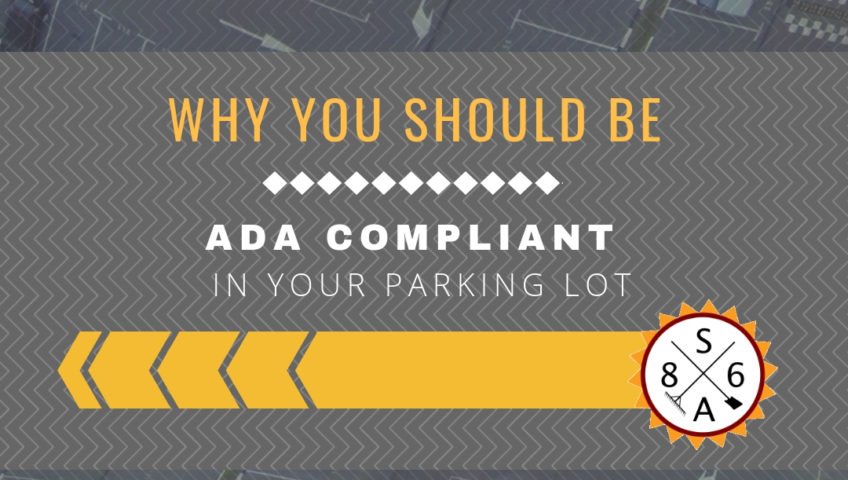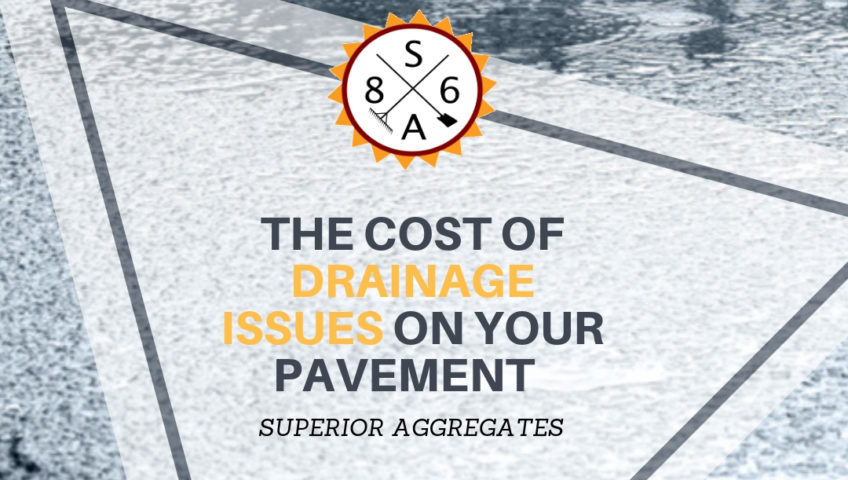
Why You Should Be ADA Compliant In Your Parking Lot
Improvements to your parking lot aren’t an expense, they’re an investment. Those simple changes can pay for themselves.
They’re also the law. The Americans with Disabilities Act (ADA) has specific guidelines and requirements to accommodate those with disabilities. For your parking lot to be ADA compliant, it must be accessible and have no barriers, among other requirements. A full list of requirements can be found here. It is a common misconception that parking lots constructed before 1990 have been grandfathered in and don’t need to meet ADA requirements. As of 2012, that isn’t true. All businesses are required by law to be ADA compliant.
Here are some of the ways you’ll benefit:
1. More Customers
ADA compliance is designed to make it easier for people to access everyday businesses. You’ll open opportunities for more people to visit your store or office, bringing in a whole new set of customers or clients.
People with disabilities make up the largest minority in the nation, and they represent more than 12 percent of the population. With the growth in the aging population, that’s a lot of potential new customers or clients!
2. Tax Benefits
The IRS offers tax advantages in the form of credits and deductions for businesses that can help with the cost of making your parking lot ADA compliant. According to the ADA website, the credits can be up to $5,000 a year for businesses with less than one million in revenue “to offset the cost of undertaking barrier removal and alterations to improve accessibility” and the deductions can be up to $15,000 a year for all businesses for the cost of these improvements. Check with your accountant for more information.
3. Higher Property Value
It’s hard to predict the future, and you could outgrow your current location. Making your parking lot ADA compliant may increase your business’s property value because potential buyers would not be saddled with the cost of improving the property, yet will still benefit from the upgrade.
4. Competitive Advantage
If you’re ADA compliant and your competitor is not, you are likely to draw in more consumers. The aging population – which makes up a large percentage of those with disabilities – holds half of the discretionary income in the nation, Even people who aren’t disabled respect the needs of others and will patronize businesses that are accessible to their friends and family members with disabilities. This holds true for employees as well, and your competitive edge can extend to potential new hires.
5. Community Spirit
While more difficult to quantify, making your parking lot ADA compliant tells your community “we care” by respecting the needs of others. Today’s consumer looks for businesses that are socially responsible. Consider the needs of people with disabilities and the difficulties they face in everyday activities. By showing consideration, you are telling the public you are a company to trust. If you are thinking of the public, the public is thinking of you.
Simple yet important changes to your parking lot can affect your bottom line, offsetting the cost of those improvements. Those improvements can be seen as more than a business expense, but rather, a marketing tool.
Improvements to your parking lot aren’t an expense, they’re an investment. Those simple changes can pay for themselves.
They’re also the law. The Americans with Disabilities Act (ADA) has specific guidelines and requirements to accommodate those with disabilities. For your parking lot to be ADA compliant, it must be accessible and have no barriers, among other requirements. A full list of requirements can be found here. It is a common misconception that parking lots constructed before 1990 have been grandfathered in and don’t need to meet ADA requirements. As of 2012, that isn’t true. All businesses are required by law to be ADA compliant.
Here are some of the ways you’ll benefit:
1. More Customers
ADA compliance is designed to make it easier for people to access everyday businesses. You’ll open opportunities for more people to visit your store or office, bringing in a whole new set of customers or clients.
People with disabilities make up the largest minority in the nation, and they represent more than 12 percent of the population. With the growth in the aging population, that’s a lot of potential new customers or clients!
2. Tax Benefits
The IRS offers tax advantages in the form of credits and deductions for businesses that can help with the cost of making your parking lot ADA compliant. According to the ADA website, the credits can be up to $5,000 a year for businesses with less than one million in revenue “to offset the cost of undertaking barrier removal and alterations to improve accessibility” and the deductions can be up to $15,000 a year for all businesses for the cost of these improvements. Check with your accountant for more information.
3. Higher Property Value
It’s hard to predict the future, and you could outgrow your current location. Making your parking lot ADA compliant may increase your business’s property value because potential buyers would not be saddled with the cost of improving the property, yet will still benefit from the upgrade.
4. Competitive Advantage
If you’re ADA compliant and your competitor is not, you are likely to draw in more consumers. The aging population – which makes up a large percentage of those with disabilities – holds half of the discretionary income in the nation, Even people who aren’t disabled respect the needs of others and will patronize businesses that are accessible to their friends and family members with disabilities. This holds true for employees as well, and your competitive edge can extend to potential new hires.
5. Community Spirit
While more difficult to quantify, making your parking lot ADA compliant tells your community “we care” by respecting the needs of others. Today’s consumer looks for businesses that are socially responsible. Consider the needs of people with disabilities and the difficulties they face in everyday activities. By showing consideration, you are telling the public you are a company to trust. If you are thinking of the public, the public is thinking of you.
Simple yet important changes to your parking lot can affect your bottom line, offsetting the cost of those improvements. Those improvements can be seen as more than a business expense, but rather, a marketing tool.

